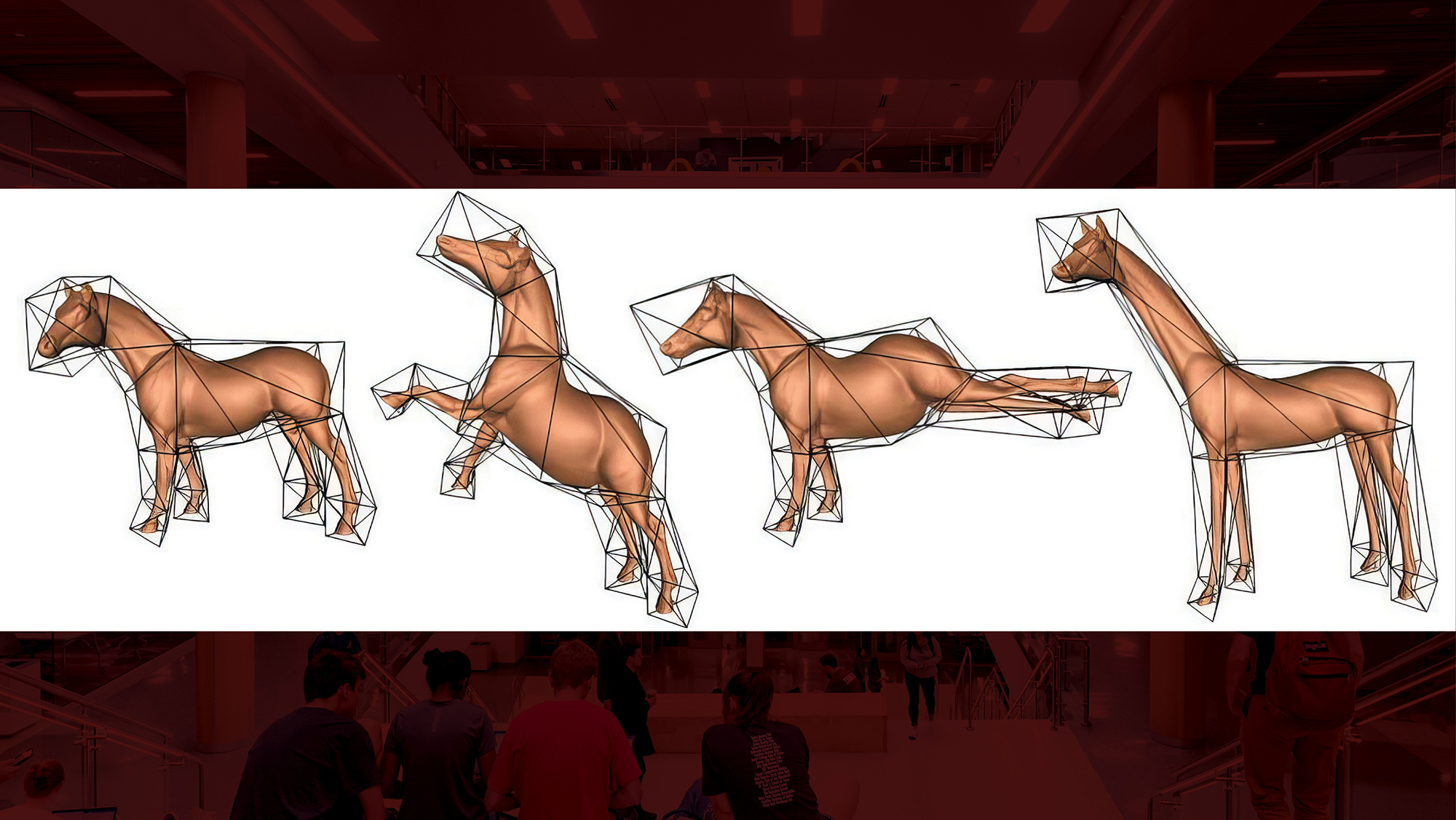
In the fall, the Association for Computing Machinery (ACM) released a collection of the most original, boundary-pushing papers that have been presented at their computer graphics conferences. Dr. Scott Schaefer, professor and department head, and Dr. Wenping Wang, professor, of the Department of Computer Science and Engineering at Texas A&M University authored papers selected for the collection.
The ACM is a professional society that includes Special Interest Groups (SIGs) representing various areas of computing. The Special Interest Group on Computer Graphics and Interactive Techniques (SIGGGRAPH) released Seminal Graphics Papers Volume 1 in 1998 to celebrate 25 years of SIGGRAPH conferences. Wang and Schaefer’s papers were included in Seminal Graphics Papers Volume 2, which was recently released to commemorate 50 years of SIGGRAPH conferences.
“I am truly honored that our work has received such distinguished recognition by SIGGRAPH and happy to see that this work has had a profound impact on geometric processing research in computer graphics. There is no doubt our strong group at Texas A&M will continue to produce first class research and educate the next generation of students of the highest caliber in computer graphics,” said Wang.

Wang’s paper was originally published in 2006 and was the first paper about architectural geometry presented at a SIGGRAPH conference. Wang and his co-authors addressed several persistent design problems concerning freeform architectural surfaces like roofs. Some of the design challenges for freeform surfaces include how to break them down into multi-layered, structurally stable panels. Other challenges include manufacturing panels efficiently while still ensuring they meet aesthetic requirements. Wang and his co-authors proposed conical meshes — flat quadrilaterals arranged in a web-like pattern — as a solution.
Schaefer’s paper was originally presented at the SIGGRAPH conference in 2005. Schaefer and his co-authors addressed how barycentric coordinates, which had previously been applied only to 2D shapes, could be applied to 3D triangulated surfaces (surfaces graphically overlayed with a net of triangles). Barycentric coordinates describe the position of a point within a triangle. Beyond that, this paper detailed how barycentric coordinates could be used to describe changes in a 3D surface’s size or shape, called 3D surface deformation or cage-based deformation.

“I was excited to see our work recognized as a seminal SIGGRAPH paper,” Schaefer said. “Barycentric coordinates is a very interesting field for me, and I am happy to see others appreciate the work as well.”
The co-authors on Wang’s paper were Yang Liu, Helmut Pottmann, Johannes Wallner and Yong-Liang Yang. The co-authors on Schaefer’s paper were Tao Ju and Joe Warren.